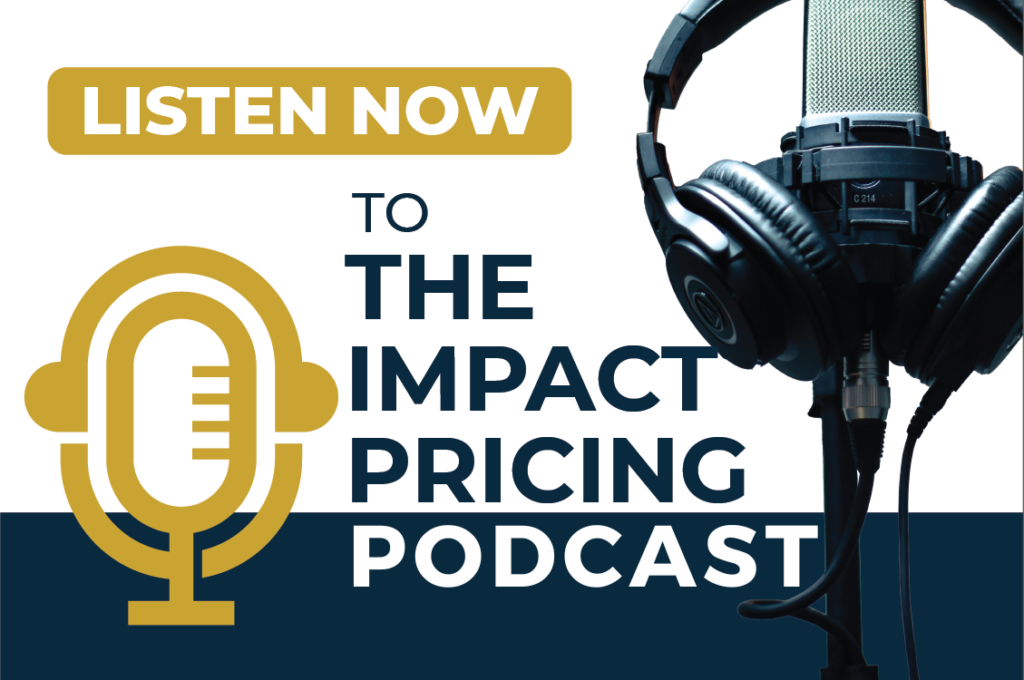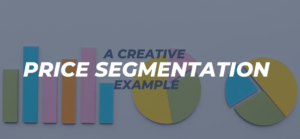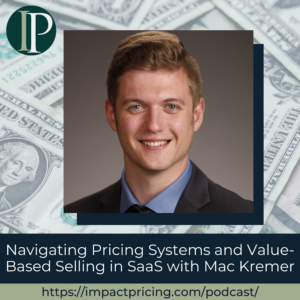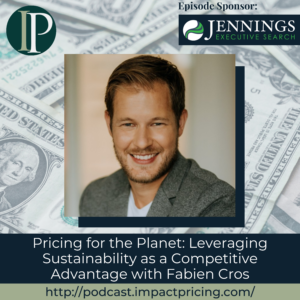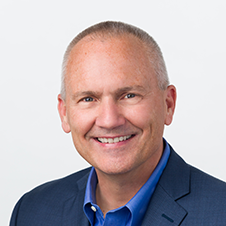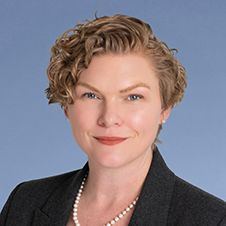
In this episode, Mark discusses how analytics lead SaaS businesses to success as he shares insights most SaaS entrepreneurs need to know about the relationship between analytics and pricing.
Podcast: Play in new window | Download
Why you have to check out today’s podcast:
- Discover how a different way of consulting like analytics can help SaaS businesses to become profitable nowadays;
- Know how much of a game changer analytics is in terms of keeping the relationship between customer loyalty and pricing intact;
- Find out how the scientific sense of inquiry helps pricing people reach greater heights in relation to sales and pricing with clients
“It isn’t that you say, ‘Hey, what are you willing to pay for this?’ That’s not the question. You’ve got to say, ‘tell me about what you’re really trying to solve for here and how big a problem is this to you. What would make you feel spectacular?’ Then let’s talk about the technical realities, and then let’s talk about a price.”
– Mark Stouse
Topics Covered:
02:02 – Getting exposed to pricing and learning things through failures with Mark’s experience in Honeywell Aerospace and Proof Analytics
04:06 – Diving into the world of pricing with the help of advisors he trust
06:41 – Starting out in a SaaS company and initially doing consulting: a good way for one to be profitable
09:02 – A different consulting model – analytics – for a better, faster, and cheaper reality nowadays
13:16 – Business and the gap it has with data scientists due to the lack of contextual understanding in both concepts
18:23 – What does Proof Analytics charge for and why is that the right thing for them to charge for?
20:20 – Talking about the concept of 10 models equals 10 questions and how COVID affected the business industry in the past two years
26:05 – The differences in the opportunity costs of small and large companies
30:23 – A model as an indicator of customer success and people’s obsession with margins
33:25 – What makes SaaS beautiful is that it concerns value at all times
35:30 – Mark’s pricing advice for the listeners
Key Takeaways:
“If you want to talk about a lesson in the reality of economics, start a SaaS company and you will learn more than you ever dreamed was out there.” – Mark Stouse
“The problem has been not the math and not even the data. It has been the issue of how do we operationalize analytics so that everybody is able to make a better decision today than they were making before when they didn’t have analytics. It really is taking the existing reality and making it better, faster, cheaper.” – Mark Stouse
“Data scientists really don’t typically have much subject matter expertise about any part of the business, so as the business person, you have to be very prescriptive with the data scientist in terms of laying out the non-mathematical equation.” – Mark Stouse
“If you’re a very large enterprise and you’re spending $150-$200 million on marketing, what you are really after is maximizing the upside and minimizing the negative impact EPS from bad investments. That’s what you’re really after. If you are a much smaller company, you’re really trying to avoid, among other things, being a two-time loser.” – Mark Stouse
“The intersection of customer loyalty and pricing is also a piece that is usually ignored, because pricing is seen in a very short cycle sense rather than something that’s a longer time.” – Mark Stouse
“The human being has become key to the success of set which probably really and truly always was or should have been. There was just this unhealthy obsession with 90% profit margins.” – Mark Stouse
People / Resources Mentioned:
- Proof Analytics: https://www.proofanalytics.ai/
- Honeywell Aerospace: https://aerospace.honeywell.com/
Connect with Mark Stouse:
- LinkedIn: https://www.linkedin.com/in/markstouse
- Email: [email protected]
Connect with Mark Stiving:
- LinkedIn: https://www.linkedin.com/in/stiving/
- Email: [email protected]
Full Interview Transcript
(Note: This transcript was created with an AI transcription service. Please forgive any transcription or grammatical errors. We probably sounded better in real life.)
Mark Stouse
It isn’t that you say, “Hey, what are you willing to pay for this?” That’s not the question. You’ve got to say, “tell me about what you’re really trying to solve for here and how big a problem is this to you. What would make you feel spectacular?” Then let’s talk about the technical realities, and then let’s talk about a price.”
[Intro]
Mark Stiving
Today’s podcast is sponsored by Jennings Executive Search. I had a great conversation with John Jennings about the skills needed in different pricing roles. He and I think a lot alike.
If you’re looking for a new pricing role or if you’re trying to hire just the right pricing person, I strongly suggest you reach out to Jennings Executive Search. They specialize in placing pricing people. Say that 3x fast.
Mark Stiving
Welcome to Impact Pricing, the podcast where we discuss pricing, value, and the smooth relationship between them. I am Mark Stiving and my mission is to help your company win more business at higher prices, and helping us do that today is our guest, Mark Stouse.
Here are three things you’d want to learn about Mark before we start.
He’s the Chairman and CEO of Proof Analytics. He was 2020’s Top 10 Most Influential Analytics Leaders, and he was CMO/CCO at Honeywell Aerospace. So, he has tons of experience. Oh, and he also hosts his own podcast called Accelerating Value.
Welcome, Mark.
Mark Stouse
Hey, it’s a pleasure. It’s going to be great just with that first name, Mark, you know. I mean…
Mark Stiving
It’s something, right?
Mark Stouse
Yeah.
Mark Stiving
So, I’m going to ask this question even though I know it isn’t the right question. How did you get into pricing?
Mark Stouse
You know, I came probably like a lot of people whose job is not directly related to pricing. I kind of edged into it, right? So as a marketer, I became increasingly exposed to it in large software companies, and then as the CMO at Honeywell Aerospace, I started having a lot of exposure to it. Pricing in the aerospace industry is super, super critical, and you’d talk about lifetime value concepts of pricing; that industry embodies it. And you won’t see it actually, you know, flip over to green light for years on a particular deal, right? And so, the idea of a weighted average and all this kind of stuff really becomes really important there.
So, then I became, you know, I started Proof Analytics which is an analytic software SaaS company, and I had to come to grips with the reality of pricing, like in a direct sort of way, you know, not like Hey, I’ve got this huge team and they’re going to help me figure it out kind of way and that there’s a lot of market inertia behind us and all this kind of wonderful stuff.
And so, it got extremely real; very quickly. And you always- I think SaaS companies, founders always start in the wrong place, and so, we did, too, right? And so, we had to learn all that.
Mark Stiving
Yeah. One of many things I find fascinating is when we start companies, when a CEO or someone starts a company, the CEO actually is responsible for pricing. There isn’t anybody else that’s kind of go figure that out, unless you fall into a million dollars and go hire a team. But in truth is this is my baby. It’s my idea, my product. I got to go price it.
So how did you do that? How did you make those decisions?
Mark Stouse
Well, in my case, I wrapped myself in a cocoon of advisors that I trusted who really did have a lot of that knowledge. I think that the challenging part is that there’s a lot of disagreement within that world about pricing models. And so, at the end of the day, you know, it wasn’t like I had to choose between two basic models. There was kind of like more like four or five that were being strenuously advocated, right? So, I really went out. We already had some pretty serious early customers, and I went out to them and I said, “Hey, what do you think?” And they helped me narrow it down to like two, but I still ultimately – together with my team – had to make a call. And I think that we went for kind of a very, very traditional SaaS pricing model which probably would have been right on the money 5,6,7 years earlier but was already starting to show its age.
And then also, you know, cash is king in a startup, and you’re trying to generate as much as possible while at the same time having relatively little to offer people because you’ve got your MVP – your minimum viable product – and so, you know, it’s kind of like, “I got a little bit of stuff that’s really, really cool, and I want to charge you maximum dollars so that I can make this work,” right? And of course, they didn’t. That’s not the way our customer sees it.
Mark Stiving
No.
So, one of the biggest problems with starting a SaaS company is that cash flow issue, right? If you assume just for rough math for a second, I’m going to create a million dollar on-prem software application and I’ll sell it for a million dollars. Well, if I’m doing that in SaaS, as a general rule, you divide that by 30 or 35 or something like that, and that’s how much monthly revenue you get, and that just doesn’t pay the bills.
Mark Stouse
That’s right. You got to do that many, many, many times, right? Or you have to raise a lot of money, or both, or somehow, you magically keep your nut small.
Mark Stiving
That’s the thing. You got to keep it small.
Well, it sounds like the little conversation we had ahead of time, it sounded like you said, “Well, let’s get into consulting so that we can get money up front.” Is that a true statement, or no?
Mark Stouse
I think that initially, we did do a fair amount of consulting, because we just didn’t have that much more product, you know, in the earliest days, right? I mean, today, it’s really serious, but six years ago or so, it was pretty basic. And so, we had to augment it with more traditional consulting kind of services, which are very expensive to mount, right? Not only do they jack the cost to the customer quite a bit – and in one sense, antithetical to the idea of SaaS –but you have to pay these people, and they’re not cheap, right? And then you’ve got to… So, let’s say that you’re paying them 200 bucks an hour, which is sort of the going rate for data scientists these days in the open market, and then you got to multiply that to make money off of it at all. And I don’t even mean be profitable on it. I mean, actually have some money for yourself, right? And so, you rapidly get into a situation where you’re above market in terms of what a customer is willing to pay, so then you have to squeeze. It is that if you want to talk about a lesson in the reality of economics, start a SaaS company and you will learn more than you ever dreamed was out there.
Mark Stiving
Yeah. So, what I love about starting out in consulting in the story or the way you think about it is if you can get a customer to pay you those ridiculous amounts of money to have somebody come in and do the consulting and set everything up and figure out what your problems are. You have really found a place where customers are getting value for your product. And if you can take that and shift it into a SaaS product later, this is like the Holy Grail, right? You’ve proven it by charging people tons of money, and then you create a product where we just charge you a lot of money. And now we’re profitable.
Mark Stouse
Right. And I think that that is very much where we are today, right?
So, the analytics that we have automated are not new. They’ve been around for a long time. They’re the heart and soul of mainstream data science. So, we’re talking about multivariable linear and nonlinear regression. So, depending on your data scientist, pretty much everybody’s going to say this area of math answers 70 to 80% of the world’s questions, right?
So, this is historically been offered purely as a consulting kind of arrangement, and you get one or two models that are updated every 6 to 12 months. And so essentially, you have a really high latency on the recap which robs a lot of the value from the whole thing, whole experience, and then you’re paying to $2.5 to $3 million a year to a consultancy to do this.
And so, the problem has been not the math and not even the data. It has been the issue of how do we operationalize analytics so that everybody is able to make a better decision today than they were making before when they didn’t have analytics, right? So, it really is taking the existing reality and making it better, faster, cheaper.
And so, we have significantly disrupted the old consulting model in exactly the way that you were just describing.
Mark Stiving
Yeah, so many things are coming to mind. One of the things is I wish that you could teach pricing people how to do analytics.
Mark Stouse
Well, yeah. I mean, one way to look at pricing is that it’s a probabilistic exercise, right? What is the probability that 80% of my addressable market is willing to pay me this vs. this?
Mark Stiving
Yup.
Mark Stouse
And that’s not something, that’s not part of the pricing mentality, most of the time.
Mark Stiving
Yeah. When I think about pricing… another thing. In my PhD program, I used logistic regression. So, you probably actually understand what that means. Most of our listeners don’t; that’s okay. Logistic regression simply means as the dependent variable, did you buy it or didn’t you buy it? And so, then you could throw in tons of different things to understand what was important – price, obviously, is one of those – but you could say, was there an end dial display that week? Was it advertised in the newspaper that week? What was the competitor’s price that week? And all of these things, you can start to tease out and say, well, how is it that people are making decisions on my products?
I think it would be amazing if we could get pricing people to think that way. The problem I don’t think is the analytics. I think the problem is writing the equation, thinking in terms of the equation. Does that make sense to you or no?
Mark Stouse
Yeah. I mean, number one, there’s tons of research out there that talks about the fact that the unaided human brain maxes out at around three or four variables, and if significant amount of time lag is impacting one or more of those variables, then your head explodes.
So, this is actually where, let’s call it the philosophy of what you’re talking about, the equation, the multivariable reality. You have to have that, but to actualize it, you have to have the math and you have to have the ability to automate it to do it at scale. And that’s where things have always broken down, historically, right? It’s doing it fast enough to be relevant and at a big enough scale to be relevant, that really mattered. And that’s where the analytics have always fallen down.
Mark Stiving
So, his doesn’t even have anything to do with pricing. I’m just so curious. What is a data scientist nowadays? Because I always pictured a data scientist as being able to run the equations, but if you give me an application, that’s easy to do, then it feels like they have to be able to write the equations. Am I making sense in the question?
Mark Stouse
Oh yeah, without a doubt. So, I’m going to answer your question directly, but I’m going to start over here a little bit, and that is one of the big gaps that historically existed between data scientists and let’s call it the Business with a capital B is contextual understanding. So, the data scientists really don’t typically have much subject matter expertise about any part of the business, right? So as the business person, you have to be very prescriptive with the data scientist in terms of laying out the non-mathematical equation.
The other problem, though, is that most business people have no understanding of data science at all and they either dismiss it or they have incredibly inflated expectations where they think that data science is almost like magic. And this latter problem has actually been exacerbated significantly by all publicity around machine learning. Because at the essence of machine learning – I’m grossly simplifying it but it’s still true – is this idea that I can give it a ton of data, an impenetrable volume of data, true big data, and it will magically find all the patterns, all the significant patterns in that data which a normal human being, a normal team of human beings would struggle to do if you gave them years, right? So, the ability to all of a sudden extract patterns from large amounts of data appears to the business to be like magic, and to be very painless. This has been one of the reasons why there’s a lot of hype around it.
But if you go over to the data scientist side, like, do you have any freaking idea how much data you have to have to train the machine learning to operate and then to maintain it? You have to basically have true big data that checks all five definitions of big data. It’s not just about having a lot of data. You can have a lot of data and it can all be small data, not big data, right?
And so, all these things are actually in conflict with each other, and we can call it – for the purposes of pricing – expectations and reality.
So today, the data scientist is vectors a great… I’ll send it to you when we’re offline. There’s a great article that came out today that was talking about how does a data scientist’s day break down today vs. in the past, and in the past, it was a significant amount of what’s called data engineering, right? It was the unsexy part of it. It was like 80% of the whole deal. Now, it’s dropped about 40% because of different tools, but it’s still significant, right?
So, it’s one of those things where, in the context of pricing, you have to juxtapose the technical realities that your customer actually really doesn’t care about, doesn’t want to have to deal with, but you have to price it to deal with these things, while at the same time, preserving a sense of all and magic around it. And that is actually really hard.
Mark Stiving
So, I do enjoy data scientists. I find them a lot of fun. But I want to jump back, let’s jump back to pricing. Since you’re so willing to talk about your company for a second, let me ask some pretty hard pricing questions, if I may; at least I think these are hard pricing questions.
When I think of pricing, I think companies tend to have three key value levers that they get to pull. And those three value levers, by the way, are your market segments, your packaging, and your pricing metric. And the hardest of those three, by far, I think, is the pricing metric in most cases, especially for SaaS companies.
Mark Stouse
Yeah, I agree.
Mark Stiving
So, a pricing metric is what you charge for. First off, what do you charge for? And then secondly, how did you make the decision? Why is that the right thing to charge for?
Mark Stouse
Okay. So, I’m going to answer this question in kind of pre-COVID and post COVID or, you know, we’re still in COVID, right?
Mark Stiving
Yes.
Mark Stouse
So pre COVID, it was all about maximizing ROI, penetrating this huge question that the business had had about marketing, for example, but not just marketing. I’m paying $150 million for marketing every year. What am I getting in return? What is that, right? Really. And it was one of those things that I think everybody really cared a lot about sort of, but as long as passed was prologue and everybody was booming – so we’re now talking about 2016, 2017, ’18, ’19 – it was actually kind of seen in the end as being a nice to have, because past was prologue in most people’s minds, regardless of how true that actually was at the time; that’s what it was seen.
Then all of a sudden, so we were…
Mark Stiving
Wait. I don’t understand. What were you charging for? You have to answer the question.
Mark Stouse
We’re charging for access to a tool that would give them that information.
Mark Stiving
So, is it a flat rate? Was it per user?
Mark Stouse
No, we actually charge by in blocks of models. So, we wanted it to be very much tied to value, real and perceived value, and we wanted it scalable, right? And so, we would say, hey, you know, you buy a block of 10 models, you use that up, you buy more, right? And there’s a lot of very successful software companies that use that model.
Mark Stiving
So, when you say a block of models, you’re essentially, in my mind, I don’t understand what a model is, but I’m thinking, is that an equation? Is that a, “I’m going to go test this theory”?
Mark Stouse
That, sort of. Yeah. So, the way you have to look at it briefly is 10 models equals 10 questions. I have 10 things I want to know. So, let’s briefly take a detour into the scientific method of inquiry. I have a question. In return, I have a hypothesis that I pause it, right? Essentially, if you’re a marketer or business person, this is why I am doing what I’m doing right now, right or wrong. I’m doing what I’m doing, because I believe at some level, it’s having a positive impact.
Mark Stiving
Right. So, is my Facebook spend impacting my conversion rates?
Mark Stouse
Correct, and it could be anything, and it is literally anything, right?
So, question–hypothesis, that hypothesis dictates the model that’s created in proof, and there’s a lot of automation, auto assists in the model creation improved that speeds up model creation from days to hours, right? And then the model, you know, obviously, it’s all vertically integrated in this sense, right? The model dictates the datasets that are needed to arm the model. And once you pull all that in – usually through API, but not always – and you hit the compute button, from that point forward, it’s fully automated, or some people like to think of it as being semi-autonomous, right? So, when all the datasets are updated at whatever frequency you’ve set it up to update, you’re going to get an automatic recalc.
But at the end of the day, we were still charging for answers to questions, right?
Mark Stiving
Yup.
Mark Stouse
Then all of a sudden, COVID happened, and everything, in terms of past being prologue was totally destroyed. And all of a sudden, people were like, “Damn, I don’t even know what to do next. I don’t even know where I am on the map.” And we started hearing this a lot, and we’re already toying with this side. Because when you automate the analytics as we’ve done it, and you get this auto recalc again, and again, and again, really, the output actually more than resembles the GPS. It operates exactly like the GPS on your phone.
So it says, this is where I am, this is where I want to go, you’re cruising along, it’s tracking you, it’s tracking all the environmental factors that matter to your trip, and when something goes oops, then all of a sudden, it says, Mark, we want to redirect you over here, and you’re going to be 10 minutes late to your dinner, but if you stay where you are, you’ll be 30 minutes late to the dinner, so let’s do this, right? All of a sudden, that became, we were still delivering it all the same way, technically; the product had not changed. But the answers to those questions – the meta questions, if you want to think of it that way, was really what people wanted, right? They wanted to know like, where am I? Like, let’s use navigation. Let’s extend that.
I grew up in a sailing family. I was actually the train navigator as of age nine. And we would, I would, you know, take my rule and I would plot a course from A to B. And there would be current noted on the chart and all this kind of stuff. But we were still, I mean, I’m old enough to where I learned with a sextant, how to shoot the sound of the sextant, plot my location. But sometimes, guess what? You didn’t have access to the sun. You couldn’t see anything for days. And you finally get the sun, you shoot it, you plot it, and you’re like, Crap. I’m like way off course. So, you are zigzagging back and forth in a pretty pronounced way across your original plumb line, the chorus line, right? That is exactly what’s been going on in business the last two years.
And so, if they can collapse the zigzag, they can tighten it up where you don’t have this huge area of waste in this huge area of waste in this huge area of waste. That matters, right? If they can go to their board and say, hey, not only do we understand the multivariable effects of all this, at least within our containerized version of reality, but we can actually navigate based upon headwinds and tailwinds and all this kind of stuff. That was huge. I mean, that was tectonic. And so, our average deal size just pretty much tripled.
Mark Stiving
So did the pricing metric change? Are you still charging by the model?
Mark Stouse
We are still charging by model, but people wanted to buy a lot more models. They were jumping in with both feet, relative to… I mean, our average deal size two and a half to three years ago was around 50k or 60k, year one. Now it’s around 160-180k, year one. So, yeah.
Mark Stiving
Nice. So, if you don’t mind, I’m going to push back a little bit on your pricing metric.
What I like to do whenever I think about a pricing metric is you set it up front, is it correlated with value? The more people, more value someone gets, the more we could charge and charge. And it almost seems to me that if I’m a small company and I can answer a question, I’m going to get less value than if I’m a big company and I answer that same question. It also seems to me that…
Mark Stouse
What is causing you risk?
Mark Stiving
Sure, but I think of this from a pricing perspective, too. If I can move your needle 1% of revenue with whatever decision we just made, for a big company, that’s the bigger value than for small company.
Mark Stouse
Yes. The other way to look at it, though, is that if it can help you eliminate things that are not investments that you’re making that are not paying off and that is not obvious to you because of the time lag that’s involved, then a lot of money has dropped to the bottom line if you choose to see it in those terms, right?
So, the other thing that I would just say is that if you’re a large, very large enterprise, if you’re Fortune 500 and you’re spending $150-$200 million on marketing, what you are really after is maximizing the upside and minimizing the negative impact EPS from bad investments. That’s what you’re really after. If you are a much smaller company – but smaller is relative, right? – you’re really trying to avoid, among other things, being a two-time loser.
So, the negative cash flow impact on a small company from a bad investment is really huge. And if you can prevent that from happening, you are in a really good place, right? So, it really depends. That’s why I say it really depends on what’s at risk.
Mark Stiving
Always.
Mark Stouse
It’s opportunity cost. It’s always opportunity costs. But it’s more existential in a small company than a large company, right?
I think that Honeywell was actually a great example of this, right? They did not have a huge expectation, for example, that we were going to significantly improve average deal velocity. And so, when we did that, we increased average deal velocity 5% over a two-year period that got $11-12 billion moving 4 to 5% faster. That was huge impact on cash flow, which was actually far more significant to them than top line growth. Our impact, again, on something like op income – margin – was far more important to them than top line growth.
So, I think you do have to say – and this is where it’s very situational – what matters most? What are people really trying to solve?
Mark Stiving
Yep. No, I agree completely. And kind of what I was trying to get at is, isn’t that I know a better pricing metric? It’s that the pricing metric doesn’t truly capture value and there might be a better one there? And so, you could take Honeywell as an example and say, “look, I can move top line growth,” and they go, “I don’t really care. I care much more about velocity of sales.” “Okay, awesome.” “So, one of them I would pay more for than the other.”
Mark Stouse
Right. I think that the challenge particularly in large companies is they love predictability on pricing, right? So, if you go in there with a with a true value-based model that says if we save you 10 gazillion dollars, we’re going to take 1/10th of 1% of that, emotionally, you’ve hit the hot button, and bureaucratically, it isn’t going to happen.
Mark Stiving
Yup.
Mark Stouse
Right? And so, you have to kind of ride this fence on pricing between those two realities.
And so, one of the ways we look at our pricing model also is as an indicator of customer success. So, if they are buying more models, ipso facto, they are very, very pleased with what they’re seeing so far and they want more of that.
Mark Stiving
Yup.
Mark Stouse
Now, at some point, and this is true for almost any company in my experience, they’re going to plateau. They may not permanently plateau, but they are going to plateau. It’s just reality.
And so, the real issue in the long term with enterprise, SaaS is the sustainability of the solution success, right? And so, this is where being able to deliver more than expected, charge more – but not rape and pillage like some software companies do on pricing – is what ultimately builds the customer loyalty that you’re ultimately after. And so, the intersection of customer loyalty and pricing is also a piece that is usually ignored, because pricing is seen in a very short cycle sense rather than something that’s a longer time.
Mark Stiving
The thing I like about SAS is that we think a lot about lifetime value of customers, right? We have formulas to calculate what’s the lifetime value of a customer.
Mark Stouse
So, I think it’s one of those things that until COVID, you heard a lot of conversation that it wasn’t real. Not really, right? You know, companies were focused very much on the quarter. They put very little into the customer support. They put an absolute minimum into customer support. And so, it was COVID that once again, you know, let us count the ways COVID has done this on our society. It totally adds up into this reality and people were just like, I’m not putting up with this anymore, right? And the very thing that they that everyone was so excited about pre COVID was, “I don’t have to actually interact with human beings. I can just use my SaaS tool and it’s all been great.”
Mark Stiving
We call that product lead growth. Okay, go ahead.
Mark Stouse
Now they want to talk to the customer support, the customer success, operations. The human being has become key to the success of set which probably really and truly always was or should have been, right? There was just this in retrospect, I think, unhealthy obsession with 90% profit margins.
Mark Stiving
Yeah. The thing I love about SaaS I guess from an altruistic point of view or however you want to look at that is in traditional businesses, I could sell your product, and if you never used it, I didn’t really care. I got your money. Life is good. In SaaS, I actually have to care if you’re getting value out of my product or not. And so, I just love that.
Mark Stouse
I know what you mean and I’m not disagreeing with you, but I am. I will say that I think that that has been something that people have said more than they have actually done, right? And all you have to do is look at the forrester. Forrester has some amazing churn data over the last seven years and it’s just steady built. People’s frustrations are going up. And yet these companies are being sold, they’re being flipped, for huge multiples which clearly, the attrition is baked into this number in some way either by omission or commission. It’s baked in. And so, nobody is really focusing on that or hasn’t been focusing on that for the last, say, 12 to 18 months. Not in an operational, real, we’re going to get to the nitty gritty on this deal, right? Because it’s been sort of like Al Gore’s Inconvenient Truth, right? It’s if we can just ramp it hard enough and sell it fast enough, where the churn is not immediately apparent, that’s what you see a lot of.
Mark Stiving
Mark, we’re already over time. I’m so enjoying this conversation, but we have to ask the last question. What’s the one piece of pricing advice you would give our listeners that you think could have a big impact on their business?
Mark Stouse
So, it’s the one that that seems so not what you want to do. You really need to ask your customers. It feels when you do this, like you’re giving up, you’re negotiating position. You know, we just feel so wrong in so many ways. It isn’t that you say, “Hey, what are you willing to pay for this?” That’s not the question. You’ve got to say, “tell me about what you’re really trying to solve for here and how big a problem is this to you. What would make you feel spectacular? Then let’s talk about the technical realities of what it would take to make you feel spectacular on this problem, and then let’s talk about a price.”
Mark Stiving
What I just heard you say is let’s sell value. Let’s make sure that the customer understands how much value they’re going to get from our product. And then we can have a conversation about price.
Mark Stouse
Totally. Absolutely.
Mark Stiving
Nice. By the way, here’s a question that I teach people a lot, that you can ask if after you’ve convinced them a value, we’re talking about value, and you want to know what they’re willing to pay. Ask the question, how much do you think other people would pay for this?
Mark Stouse
Yeah.
Mark Stiving
And then they’re not negotiating with you. They’re much more likely to give you a more honest answer. So, nice.
Mark, thank you so much for your time today. If anybody wants to contact you, how can they do that?
Mark Stouse
So, I’m very active on LinkedIn, so that’s probably a really awesome way to reach me. You can also reach me by email if you prefer that. I’m not actually good with email, but it’s [email protected]
Mark Stiving
Perfect, and we’ll have those in the show notes so people can find you.
And episode 156 is all done. Thank you so much for listening. If you enjoyed this, would you please leave us a rating and a review? And if you have any questions or comments about this podcast or pricing in general, feel free to email me at [email protected]
Now, go make an impact.
Mark Stiving
Thanks again to Jennings Executive Search for sponsoring our podcast. If you’re looking to hire someone in pricing, I suggest you contact someone who knows pricing people. Contact Jennings Executive Search.






